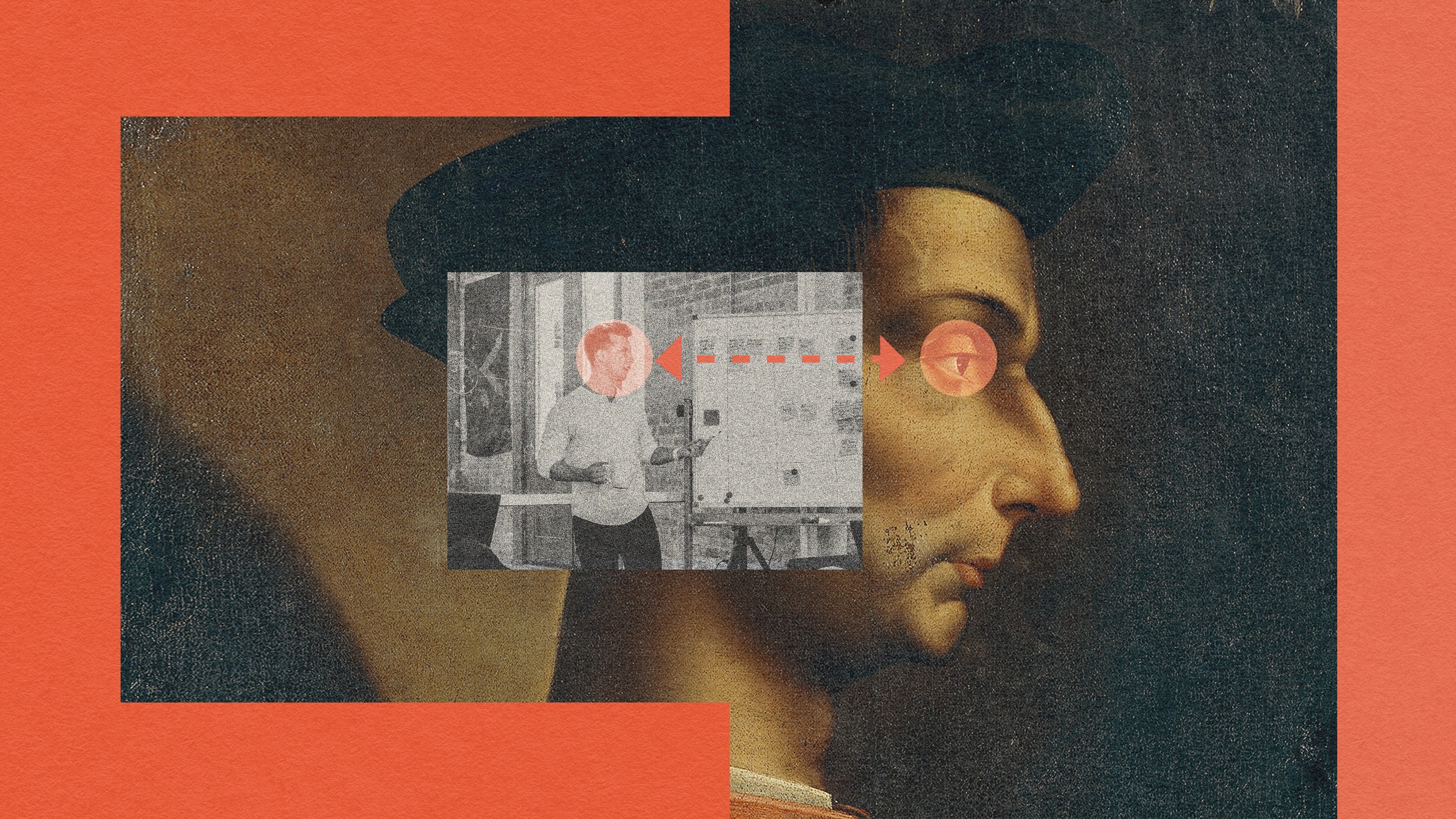Is Reality Real?

BY AHMED EL-HADY
Have you ever thought what is happening in our brains when we wander in the world around us? How do we perceive “reality”? How can we interact with reality in a dynamic and continuous manner? What is “reality” after all? One might think of our reality as 2D sheets put sequentially giving us the sense or the delusion of a 3D universe as if we are living in a trompe d’oeil 2.5D universe. How is this happening? To what extent reality is real?
Salvador dali’s The Eye (1945) is a great piece of art that summarizes how we perceive our reality and amazingly embody our experience. The eye is part of paintings made by Salvador Dali for the dream sequences of the film Spellbound starring Ingrid Bergman and directed by Alfred Hitchcock. The painting represents one of the dreams that the psychiatrist (Ingrid Bergman in the movie) was analyzing for her patients.

Salvador Dali, Study for the Dream Sequence in Spellbound1945
Looking carefully to Salvador Dali’s piece, we find lines converging that we perceive as a road going further away. How did we know that converging lines signals distance? We see flat surfaces, skies and a protruding eye in the middle of picture as if we are in 3D world, is it really 3D? What do the different colors reflect? Why do we perceive them as different? We perceive shadows of the protruding eye that give us the impression that the light is being reflected on it, we see light reflected on the retina of this eye and we might sympathize with the miserably looking eye. When the light reflected on Salvador Dali’s picture reaches our retina, a two dimensional map of the basic features of the picture (edges, length) is formed on our retina, the two dimensional map travels through our neuronal highways to intermediate areas in our brain where depth is added to the object features forming a 2.5D map. This 2.5D map finds its way to the higher brain areas where more complex object features are extracted and recognized by many specialized area: color is recognized in an area, motion in another area same for orientation and other complex characteristic features of the object.
It is striking to realize that different colors in the picture are just emergent properties of our brains making use of different light wavelengths. The different object features that have been processed in different brain areas will then be interpolated or projected to a 3D object. Contrast, color and spatial orientation are the main ingredients for a lively 3D like picture.
It is amazing how our brain processes each feature of an object in parallel systems separated in space and time. Then, these parallel distributed processes are bound into a single object that we perceive. But is this enough for object recognition? No, you can form a 3D imagery of an object but you do not recognize it. For this our memory systems that learned via experience a set of stored objects with their “cultural” semantic meanings are crucial at this stage. Our brain makes use of these stored views by comparing the perceived 3D object to the already stored views in order to recognize it this is why we recognize converging lines as a signal for distance, this is why we recognize the object in the middle of the picture as an eye and this is why we recognize the blue colored thing in the upper part of the picture as a sky. Associative memories are clearly crucial for binding different elements of the picture into a coherent experience. It is important to emphasize that our brains, to perceive the picture, depend on our early experience of reality and are in continuous learning experience in order to deal with novelty.
Our experience with Salvador Dali’s piece of art casts doubt on an objective non distorted perception of reality. Reality in this way is constructed from brain concepts. The ingeniousty of a creative art work like that of Salvador Dali is in eliciting multiple interpretations as if our brains stand confused how to abstract it. One can look at Salvador Dali’s picture in many ways: one can imagine it reflecting an insomniac depressive state where the open anxiously looking eye signals this, one can also look it as a confused state where this fearful eye is torn between the ground and the sky, one can also perceive it as an individual escaping to the mysteries of the far reaching horizons, etc..
One can also begin to infer the psychological state of Salvador Dali while painting: he might have gone through a failed relationship, he might be escaping into a fantasmatic utopia, he might be experiencing insomnia due to nightmares haunting him, etc..Our perception of art work is distinct as it is accompanied by the very subjective experience of beauty that our brain generates. It is by this way that Artists themselves become teachers that train the brains of their audiences in novel ways. They help them to learn novel abstractions. On the long term, the art works might help people to build novel realities and perceptual experiences. Just to remind you again, reality is a construction of our brains. Through creative art work, the limit of the possible is extended and stretched in ways no one can imagine.
One is reminded here of the Situationist International movement , popular in 60s, that established what is called “psychogeography” that studies the effect of the place on the individual construction of reality and used arts to help establishing alternative revolutionary utopia away from the constraints and problems of the present. I think it is high time to revive this movement to help people explore the full potential of their brains away from the constraints of the lived reality.
All the great shadows, sky, vast spaces, familiar colors, protruding eyes in Salvador Dali’s study for the dream sequence in spell bound (1945) give us the illusion that we are a perceiving a 3D world though it is clearly just 2.5D. Just imagine if we happen to enter this picture and become part of it, we will have the sense of 3D world while it is actually 2,5 D. An alien from Mars looking at us will realize that we are in a 2.5D but due to our existence in it, we feel it as 3D.
At the end, we are left to wonder with the questions: Do we really live in a 3D world or is it a 2.5D world? Is reality real? Is reality just a construction of our brains? How would our reality in a post human age looks like?
Ahmed El Hady is a Researcher at the Hybrid Reality Institute and a graduate student at the Max Planck Institute for Dynamics and Self Organization (Goettingen, Germany).





